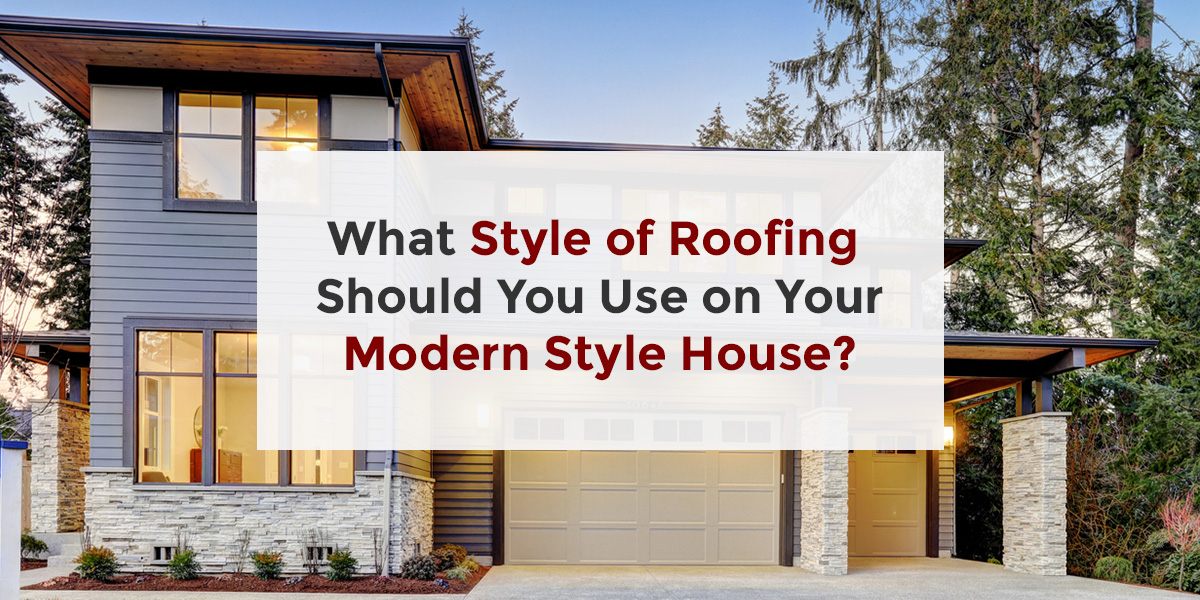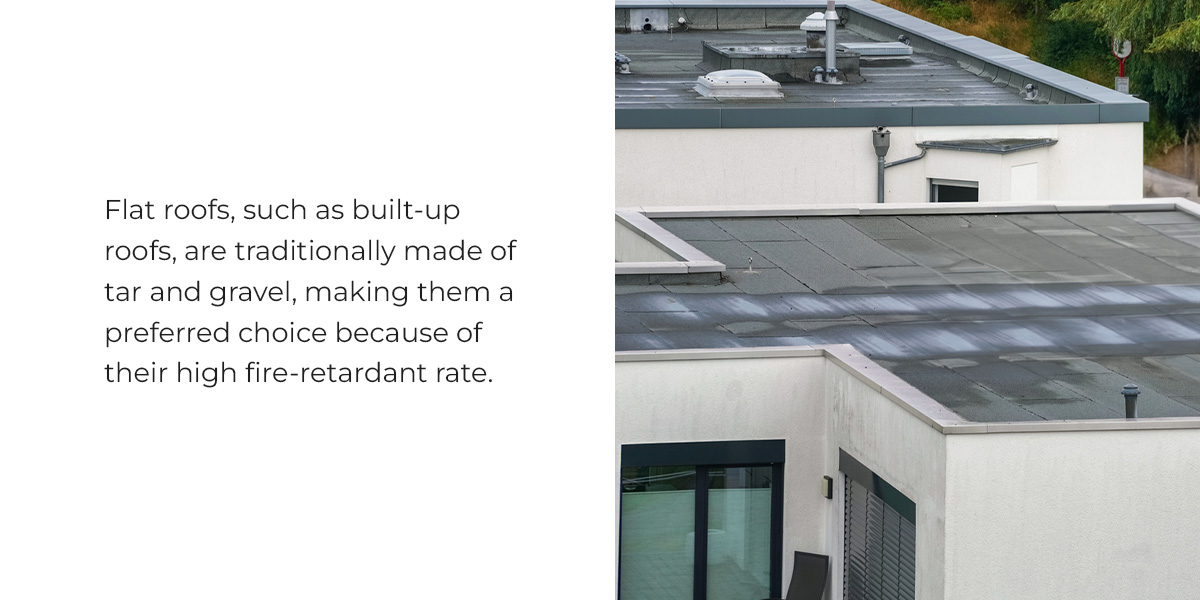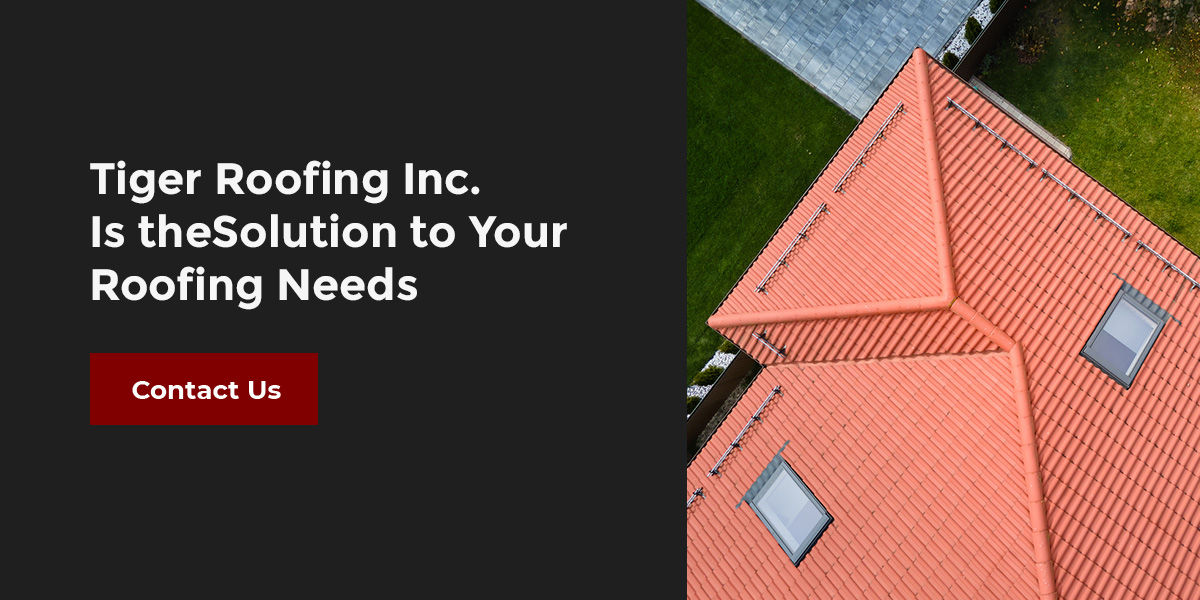
When it’s time for an upgrade or replacement, deciding on the best roof style for your modern home can be hard. You need to be equipped with enough knowledge to make an educated decision since it’s a significant investment that will last a long time. That’s where we come in.
This article will help you distinguish between the different modern styles available, including residential and commercial roofing designs. Finding out more about modern roof designs specific to your needs should point you in the right direction.
When considering a modern roof, the main objective is how it will complement your home. You need a design that will bring out the best in your home’s structural assets. Part of this is choosing the roof material since each has a different visual effect. The right material on the wrong roof style may leave your house looking awkward or out of place.
Material generally refers to the shingles or tiles of your roof, some of which include:
Your home’s style will typically determine the kind of roof you’ll install. Modern homes include the following styles:
Read on to learn more about the various modern home roof styles to give your home a makeover that will have heads turning in awe.
Two of the most prevalent yet simple roofing designs include gable and hip roofs. They are similar in that they both are triangular-shaped, allowing rain and snow to run off easily. However, the gable roof has two slides that slope on both sides, whereas the hip roof has four.
Widespread gable roofs include the front and side gables, where the front gable’s ridge or peak points to the street and one side of the side gable’s slope runs perpendicular to the street. They are used to cover most residential homes because of their cost-effectiveness, efficiency and functionality.
Cross gables are less common and characterized by numerous rooflines on either or both sides of one larger roof. They are not associated with modern architectural roofing like the others, having ties with the Tudor era that is less popular in the 21st Century.
Craftsman-style and ranch-style homes mostly use gable and hip roofs, as they perfectly suit and complement each other.

Flat roofs come in various materials that distinguish them from each other. Flat roofs, such as built-up roofs, are traditionally made of tar and gravel, making them a preferred choice because of their high fire-retardant rate. One downfall is that these materials are extremely weighty, which could damage the home’s structural integrity over the years.
Another type of flat roof is the bitumen roof with an easily applied peel-and-stick mineral-based composition. Using the torch-down method to apply it could potentially be dangerous if not done by professionals. Many opt for rubber membrane flat roofs because the rubber is exceptionally durable against sun and fire damage. They are also known to be easier to repair if leaks occur.
Flat roofs are popularly seen on prairie-style and international-style homes.
Shed or skillion roofs also belong to the flat-roof category but are different because they have sides that slope slightly. It combines elements of a gable and flat roof, making it versatile in nature.
Shed roofs can be used in conjunction with gable roofs on the same house, where different stories can use either roof style to provide a completely new and contemporary look. For example, a prairie/usonian-style house could have two or three stories, with the top roof being completely flat or gabled, while the second and first floors have shed roofs.
Shed roofs are considered cost-effective because they use fewer materials and are fairly easy to construct. They offer a clean and neat appearance when done properly.
Given their long, symmetrical shape, gambrel roofs are more commonly found in farmhouses and barnyards. These residential roofing designs are characterized by their gable-roof-type slopes that extend to additional slopes on either side. Houses with gambrel roofs are typically associated with previous Dutch-style houses and, more recently, with craftsman-style, as they include varying dimensions and smaller roofs on a large one.
They are considered unique structures that will accentuate your home and are relatively inexpensive to build and install. They also offer superb weather protection and drainage due to their three-dimensional design that lets water run off all sides effortlessly.
You may recognize variations of the mansard roof as it can be straight, concave, convex or s-shaped. Like the gambrel roof, they have a peculiar shape that will attract attention if fixed atop the right type of house. Mansard roofs have four sloped sides that meet in the middle where a peak would normally be. Instead of a peak, they are joined by a flat or low-pitched ridge.
These roofs may not be as prominent as some other roof types, but they are a great choice with excellent benefits. Some include having more space in the attic in convex or straight-shaped roofs and being easier to expand on to build another floor.
They are generally costly to install and maintain and not as effective against adverse weather conditions because of the flatter upper slope that tends to accumulate debris.

If you’re still unsure about the type of roof that will suit your modern home, Tiger Roofing Inc. will help you decide when you schedule a free consultation with us. Once we’ve assessed the situation, we’ll take it from there. We specialize in all types of roofing, including shingles, metal, tile and more. Our expert team of professionals has many years of experience and fast turn-around times, mostly completing jobs within two days, so you’ll certainly be in good hands.
We are eager to assist so you can kit your modern home with the ideal roof to match. Contact a branch near you for a quote.